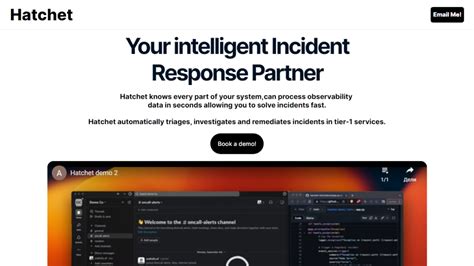The task queue landscape has often been dominated by tools like Celery for Python and BullMQ for Node.js. While these tools have proven their utility, they come with their own sets of limitations, especially when it comes to modernizing workflows and ensuring seamless integration with existing tech stacks. Enter Hatchet, an open-source task queue that is steadily making waves in the developer community by providing a PostgreSQL-backed solution designed to fill these gaps. Hatchet’s vision extends beyond traditional task queues, emphasizing ease of integration, reliability, and advanced features like fanout workflows and webhook workers.
One of the standout features of Hatchet is its endorsement of PostgreSQL as the backbone for task management. Many developers are already using PostgreSQL in their tech stacks, which makes integrating Hatchet straightforward and painless. The advantage here is significant; Hatchet models higher-order concepts like task workflows directly in PostgreSQL, making it easier to handle complex chains of tasks. This integration reduces risks commonly associated with separate task brokers, like data loss or race conditions. By treating task acknowledgements, results, and updates as part of a single PostgreSQL transaction, developers enjoy robust data integrity and simplified debugging processes.
The launch of Hatchet’s self-serve cloud platform represents a major milestone. Previously available by invite only, the cloud version now enables any developer or team to spin up scalable task queues without the overhead of self-hosting. Imagine queueing up user notifications, orchestrating RAG pipelines, or executing GPU-intensive image generation tasks, all from a unified cloud platform. Hatchet’s cloud offering is not merely an extension but an entire ecosystem aimed at enhancing developer productivity. The platform boasts built-in support for HTTP-based triggers and the ability to run complex fanout workflows, where a single task can trigger multiple child tasks in parallel. These features mark a leap forward in achieving a seamless, developer-friendly execution model.
However, some have raised valid concerns regarding long-running transactions and the impact on database performance. As one user aptly noted, long-running transactions could potentially lock up your database, a risk that must be mitigated through design. Hatchet addresses this by employing short-lived transactions for task status updates, thereby avoiding database lockup issues. Other approaches suggested by the community include leveraging idempotent job status records or upserting data to prevent hanging tasks. Such discussions indicate that while Hatchet has made substantial progress, the quest for optimizing task management continues to evolve.
RabbitMQ as a part of Hatchet’s system architecture drew mixed reactions. While RabbitMQ is used for pub/sub communications between various components, some developers are eager to see Postgres fully take over this role. Hatchet acknowledges this desire and is actively working towards a lightweight Postgres-backed messaging table to replace RabbitMQ in future iterations. This transition aims to simplify the deployment and reduce dependencies, particularly beneficial for smaller-scale systems that prefer to maintain a lean stack. This evolution is a testament to Hatchet’s commitment to refining its platform based on user feedback and requirements.
Drawing comparisons to other orchestration frameworks like Temporal or Prefect is inevitable. Hatchet distinguishes itself through its strong focus on observability and worker management. The platform invests heavily in metrics, alerting, and logging features, which provide deep insights into the health and performance of long-running tasks. This not only enhances the developer experience but also ensures reliable autoscaling of worker environments. Hatchet’s vision is to offer a superior developer experience by balancing feature richness with ease of use, thereby fostering a vibrant community of developers who continuously contribute high-quality feedback and feature ideas.
In conclusion, Hatchet is setting new benchmarks in the domain of task queues. By combining the robustness of PostgreSQL with user-centric features and an open-source ethos, it aims to address the longstanding frustrations developers have faced with traditional tools. Whether through its cloud platform or self-hosted solutions, Hatchet is poised to reshape how developers handle task management, making it an exciting addition to the arsenal of modern DevOps and microservices architectures.


Leave a Reply